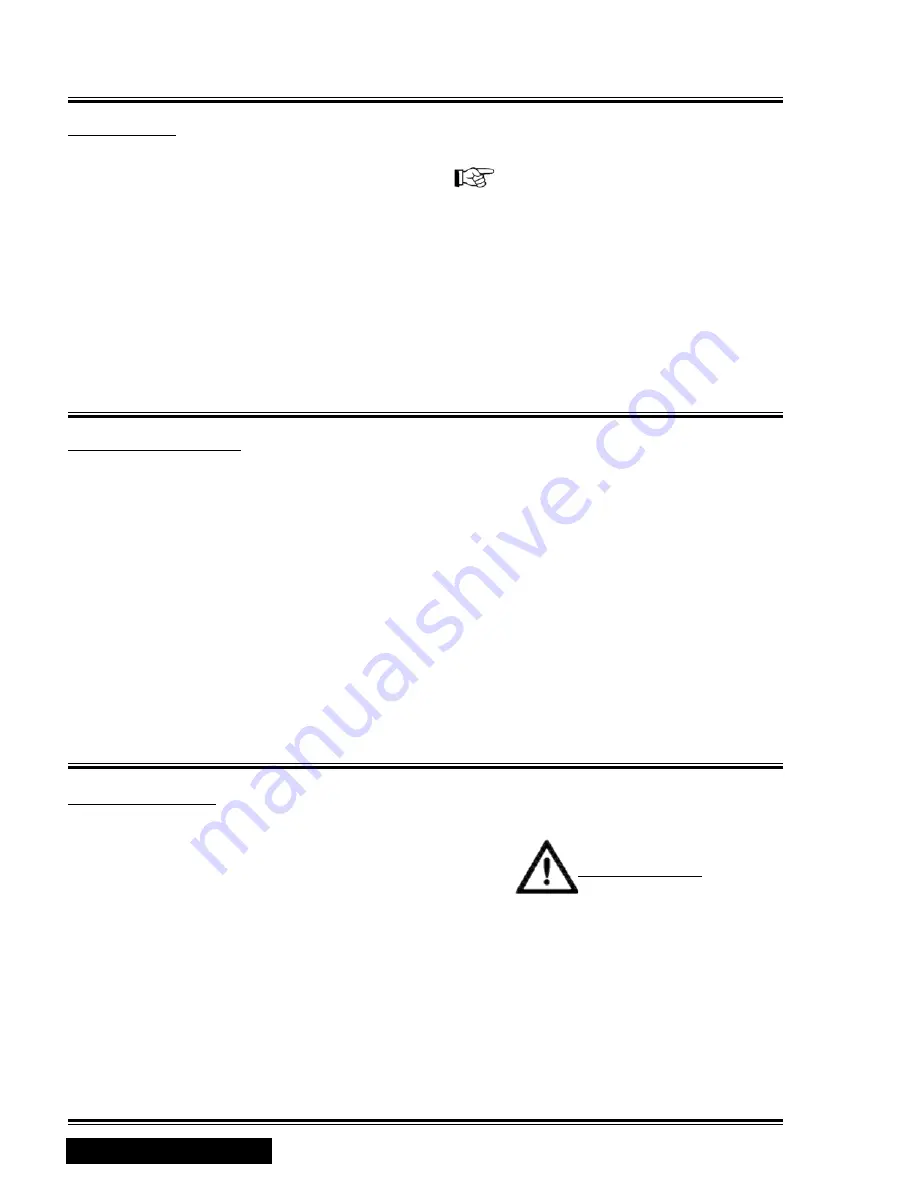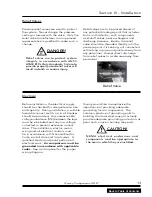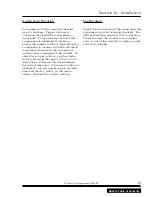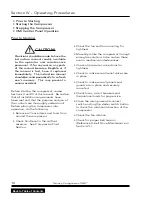
Section III - Installation
Transit Lock
A transit lock is used to secure the motor
platen during shipping to prevent damage
to drive components.
The transit lock is a piece of threaded rod
located between the motor platen and the
compressor sub base. It is marked with a
warning label.
notiCe!
Once the compressor has been located
and secured at the installation site, the
transit lock must be removed before
operating the unit.
To remove the transit lock, remove the
nuts on the threaded rod and remove
the threaded rod from the mounting tabs
provided on the motor platen and the
compressor sub base.
Piping Connections
Never join pipes or fittings by soldering.
Lead-tin solders have low strength, a
low creep limit, and may, depending on
the alloy, start melting at 360°F. Silver
soldering and hard soldering are forms of
brazing and should not be confused with
lead-tin soldering. Never use plastic, PVC,
ABS pipe or rubber hose in a compressed
air system.
Piping Fit-up
Care must be taken to avoid assembling
the piping in a strain with the compressor.
Piping should line up without having
to be sprung or twisted into position.
Adequate expansion loops or bends
should be installed to prevent undue
stress at the compressor resulting from the
changes between hot and cold conditions.
Pipe supports should be mounted
independently of the compressor and
anchored, as necessary, to limit vibration
and prevent expansion strains. Piping
should never be of smaller size than the
connection on the compressor unit.
Pressure Vessels
Air receiver tanks should be in accordance
with ASME Boiler and Pressure Vessel
Code Section VIII.
Caution!
ASME coded pressure vessels must
not be modified, welded, repaired,
reworked or subjected to operating
conditions outside the nameplate
ratings. Such actions will negate code
status, affect insurance status and
may cause death, serious injury and
property damage.
2
Quincy Compressor-QGB
™
Back to Table of Contents
















































